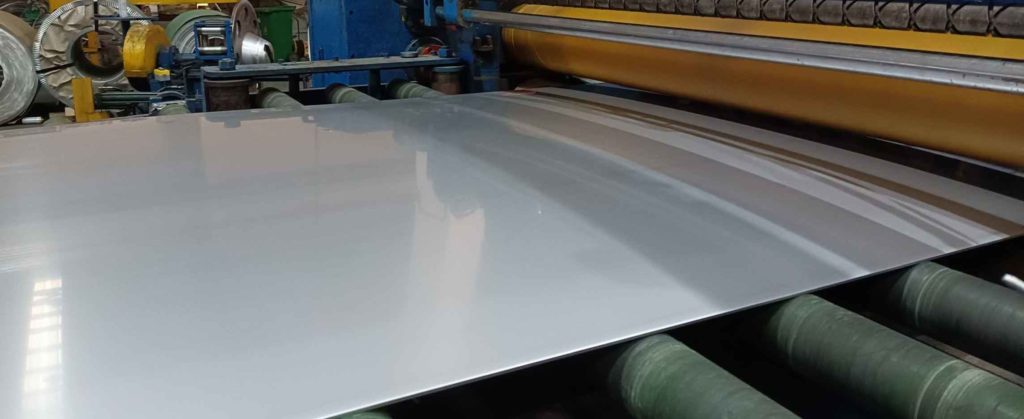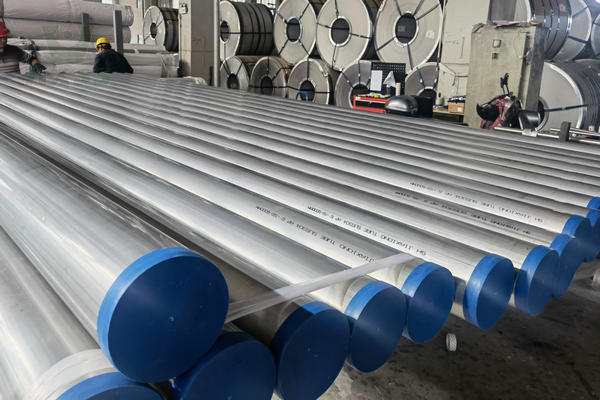
309 Stainless Steel Foils
309 Stainless Steel Foils Do you expect to have a plan or an idea to purchase China 309 stainless steel foil roll products for the
Call Us Today! +86-13761906384

309 Stainless Steel Foils Do you expect to have a plan or an idea to purchase China 309 stainless steel foil roll products for the

301 Stainless Steel Strips When you choose Shanghai Huaxiao Metal as your 301 stainless steel strip manufacturer, you are choosing a company that combines

316 Stainless Steel Strips When you choose Shanghai Huaxiao Metal as your 316 stainless steel strip manufacturer, you are choosing a company that combines superior

Hot Rolled 347 Stainless Steel Plate Looking for reliable and high-quality 347 Stainless Steel Plate Suppliers? Look no further! Our hot-rolled 347 stainless steel plates

Hot Rolled 309H/309S/309 Stainless Steel Plate 309 stainless steel Plate, 309S stainless steel – S30908 (American AISI, ASTM) 309S. The steel mill produces more 309S

321 Hot Rolled Stainless Steel Plate Type 321 stainless steel is titanium stabilized chromium-nickel austenitic stainless steel, and its corrosion resistance is similar to that

310s Hot Rolled Stainless Steel Plate 310S stainless steel plate is similar to 310 stainless steel plate. The difference is that the carbon content is

316L/316 Hot Rolled Stainless Steel Plate The 316L stainless steel plate grade has added molybdenum element on the basis of 304 ss plate, which can

Cold Rolled 301 Stainless Steel Sheet Cold-rolled 301 stainless steel sheet is a high-strength austenitic steel with excellent corrosion resistance. It is found in the

Cold Rolled 347 Stainless Steel Sheet Looking for reliable and high-quality 347 Stainless Steel Sheet Suppliers? Look no further! Our 347 stainless steel sheets are
Welcome to Huaxiao Metal, a leading company specializing in the supply of stainless steel materials. With years of industry experience and strong technical strength, we are committed to providing customers with high-quality stainless steel products and solutions. Whether you need high-performance stainless steel materials or personalized processing services, we can provide you with professional support. Contact Huaxiao Metal now to get the latest stainless steel price information.

The chart below shows the chemical composition of the most common 300 series stainless steels used in the metal hose industry. Single figures signify the maximum percentage allowable under ASTM 240 requirements.
| Grades | Cr | Ni | C | Mn | Si | P | S | Mo |
|---|---|---|---|---|---|---|---|---|
| 301 | 16-18% | 6-8% | ≤0.15% | ≤2.0% | ≤1.0% | ≤0.045% | ≤0.03% | – |
| 304 | 18-20% | 8-12% | ≤0.08% | ≤2.0% | ≤0.75% | ≤0.045% | ≤0.03% | – |
| 304L | 18-20% | 8-12% | ≤0.03% | ≤2.0% | ≤0.75% | ≤0.045% | ≤0.03% | – |
| 316 | 16-18% | 10-14% | ≤0.08% | ≤2.0% | ≤0.75% | ≤0.045% | ≤0.03% | 2-3% |
| 316L | 16-18% | 10-14% | ≤0.03% | ≤2.0% | ≤0.75% | ≤0.045% | ≤0.03% | 2-3% |
| 309 | 22-24% | 12-15% | ≤0.20% | ≤2.0% | ≤1.0% | ≤0.045% | ≤0.03% | – |
| Grades | Density | Melting Point (°C) | Tensile Strength (MPa) | Elongation (%) | Hardness (Rockwell) |
|---|---|---|---|---|---|
| 301 | 7.9 g/cm³ | 1400-1450 | 515 | 40 | 85 |
| 304 | 7.9 g/cm³ | 1400-1450 | 485 | 50 | 85 |
| 304L | 7.9 g/cm³ | 1400-1450 | 485 | 50 | 85 |
| 316 | 7.9 g/cm³ | 1371-1400 | 485 | 55 | 93 |
| 316L | 7.9 g/cm³ | 1371-1400 | 485 | 55 | 93 |
| 309 | 8.0 g/cm³ | 1400-1450 | 520 | 40 | 88 |
When choosing stainless steel materials, it is important to choose a reliable supplier. Huaxiao Metal has become the preferred partner of many companies with its rich industry experience, stable product quality, and fast delivery capabilities. We not only provide standard specifications of stainless steel materials but also customize production according to customer needs.

Our professional team will provide the most suitable solutions according to your specific needs to help you achieve the best performance in different application scenarios. Contact our sales team now to get more detailed information and prices on stainless steel grades such as 301, 304/304L, 316/316L, 309, etc.
Stainless steel is divided into different series, 300 series and 400 series are two common series, each with different characteristics and application areas. The following is a simple comparison of these two series of stainless steel:
300 series (austenitic type)
400 series (ferritic or martensitic type)
300 series:
400 Series:
Fill out the form below, and we will be in touch shortly.